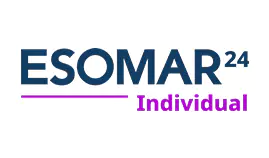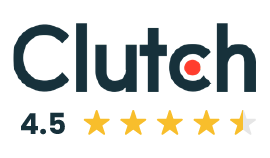
The administrative part of the health sector is quite vast and can be very stressful for the patients. In view of the fact that patients are now bearing more costs, managing with various insurance plans, and facing potentially high balance bills, they need hospitals that are financially honest and compassionate. With this in mind, this article aims to examine the ways in which hospitals can improve the patient’s financial experience.
Understanding the Patient Financial Journey
In order to enhance the patient’s financial experience, the hospital needs to empathize with patients and try to feel the frustration and anxiety they have. The visit to a such facility is stressful itself as it is often connected with health issues. The patient's financial experience is replete with obstacles that are challenging to traverse, even for the most informed healthcare consumer. In this way, the list of shared challenges can help hospitals start developing solutions.
Pre-Care Cost Estimation
It is shocking to some patients to receive a medical bill in the mail weeks after they have been discharged from the hospital. A typical complaint that hospitals hear is, “But doctor, you never said an MRI would cost this much!” Consumers want to be informed of the approximate cost of a procedure they are going to undergo as much as people want to know the cost of a car transmission from a mechanic.
However, unlike a standard car part pricing list, each patient's out-of-pocket responsibility can vary greatly based on factors like:
- Health insurance deductible coverage rulesstatus
- In-network vs out-of-network facility and physician fees
- The billing codes providers select in medical records
The different ways hospitals calculate costs can be confusing for patients, making it hard for them to see how prices are set. Patients expect hospitals to be clear about prices and help them understand their insurance costs before they get treatment.The various mechanisms used to compute costs make it difficult for patients to understand the high levels of opaqueness. They expect hospitals to provide price transparency and to assist in translating the cost structure of an insurance plan before they seek treatment.
Insurance Verification
Understanding and managing coverage specifics of variousemployer-sponsored, government, and exchange-based health plans remains complex, especially for experienced administrators. However, for the average patient who wants to check on the eligibility of their coverage before going to the hospital, it turns into a hilarious endeavor.
Details like accurately confirming active coverage status, deductible amounts, copay levels, prior authorization requirements and out-of-network restrictions are difficult to pin down. Even seemingly smallsimple changes like the reduction in coverage for some particular items or proceduresadding a spouse to a policy or switching employers can lead to unexpected medical billing denials if verification processes fail to catch them early. Patients expect more from hospitals in getting this right.
Medical Billing Process
For most patients, medical billing is a black box process that simply spits out a bill weeks after receiving care. The lengthy lag between a hospital visit and receiving an invoice is difficult to understand. Most patients find medical billing confusing because they only receive a bill weeks after their care. The delay between visiting the hospital and getting a bill, along with the complicated steps of submitting claims and dealing with insurance behind the scenes, makes patients feel left out. Learning that claim submissions, complex billing codes, adjustments and insurance payments happened behind the scene after the fact leaves patients feeling out of the loop.
With little visibility into policies that determine final out-of-pocket responsibility, patients often see charges as arbitrary rather than the result of established rules. The lack of perceived billing transparency erodes trust in hospitals. Patients want simpler, faster and more predictable financial experiences after receiving care.
Payment and Financial Assistance
Understanding a medical bill can be overwhelming for patients when it arrives. The bill often mixes unclear insurance payment details with charges from providers across several invoices. This can be especially discouraging for patients who are struggling financially. Finally, making sense of a medical bill once it arrives can be overwhelming for patients. Cryptic insurance payment details combine with provider charges lumped across multiple invoices. For financially strapped patients the process quickly becomes despairing.
Many people think their only choices are taking on debt or setting up payment plans because hospital financial help isn't clear. Patients expect hospitals to actively check if they're facing financial difficulties and to clearly explain their options for free or reduced-cost care. Just posting these policies on a website isn't enough; hospitals need to show compassion and understand the financial struggles of their patients. Unclear hospital financial assistance options leave many assuming medical bill debt or payment plans are their only options. Patients expect hospitals to screen for financial hardship actively and offer easy-to-understand charity care and free care policies. Having policies posted to a website is simply not enough. Compassion and awareness of patient financial distress are required.
By highlighting the common pain points patients experience at each step of their financial journey with hospitals, opportunities for impactful improvements become clear. Patients deserve better, and hospitals that transform their financial experience stand to gain loyalty, growth and reputation.
Improving Pre-Care Cost Estimates
To increase pre-care cost transparency, hospitals can provide user-friendly price estimation tools on their websites. Features like:
- Cost lookup by procedure code
- Out-of-pocket cost estimates by insurance payercarrier
- Personalized logins with saved health profiles
Tools like these, integrated with real-time eligibility data from payers, help patients get reliable cost estimates before care. Hospitals can also offer call center assistance and in-person financial counselors to explain estimates.
Streamlining Insurance Verification
Healthcare practicesMaintaining updated insurance coverage details for patients can be complex, with plan changes happening frequently. Hospitals can prevent denied claims and patient billing issues by strengthening insurance verification processes.
Automating theparts of the verification taskworkflow using modern solutions that aggregate payer data can minimize mistakes and free staff to focus on more complex cases and patient care.
Features like bulk verification of patient cohorts and automated checks for common coverage changes also automated coverage tracking of hidden insurance discovery improve efficiency and maximize reimbursement. Alerts for missing or expired coverage details help staff resolve issues before care delivery.
Tight integration between pre-registration systems and insurance verification tools is key to surfacing coverage issues early. Flags Alerts for missing or expired coverage details help staff resolve issues before care delivery.
Finally, tracking verification metrics over time - like change rates by payer and denial volumes - gives leadership visibility into potential process gaps. Targeted training and updated payer requirements can then be applied systematically.
Increasing Billing Process Transparency Increasing Clarity on Patient Costs
Since medical billing happens behind the scenes, patients have little visibility into why costs end up the way they do. Hospitals can lift the veil on the process and policies that influence patient invoices.
Posting pricing guidelines, billing FAQs and claim submission overviews to hospital websites clarifies common questions around medical charges. Staff should also explain payment collection processes and timing expectations at time of service.
Sending pre-bills that indicate pending insurance coverage and estimates of patient responsibility prior to final invoices also sets expectations. The goal is to decrease confusion and anxiety when final bills arrive.
To improve patient understanding and trust, hospitals need to ensure that patients are aware of their out-of-pocket costs well before they receive the final bill. This involves clearly communicating any anticipated charges and insurance coverage details as early as possible in the treatment process after conducting coverage verification.
Staff should take the initiative to inform patients about potential costs during initial consultations or before treatment begins. This proactive approach helps prevent surprises and allows patients to plan financially, reducing stress and enhancing the overall healthcare experience.
Improving Access to Financial Assistance
Nearly 20% of U.S. patients struggle financially due to medical bills. Medical practicesHospitals should clearly communicate charity care policies and payment plan options for those eligible.
Giving patients an estimate of their expected costs early helps identify those who might face financial difficulties. Using tools to screen for financial assistance needs can prevent problems before they escalate. This proactive approach helps avoid unnecessarily sending patients to collections.Providing estimates of patient financial responsibility upfront flags potential hardship cases early. Screening tools can also systematically identify patients requiring financial assistance. Identifying challenges proactively keeps patients from being sent to collections unnecessarily.
Hospitals can also offer self-service financial assistance screening via patient portals and registration kiosks. Automating initial eligibility checks through questions about income, expenses and family size allows quick assessment of needs. Staff can then follow-up on borderline cases.
Getting Leadership Buy-In
It's crucial for the senior management to support initiatives that improve the patient financial experience. Investment in these improvements requires a solid business case. The benefits can be highlighted through a number of metrics, such as:
- Reduced denied claims due to eligibility errors
- Reduced A/R Days
- Minimized costs related to bad debt
- Increased patient satisfaction scores
Improving these metrics enhances competitiveness and also positively affects reimbursement rates, as the focus on value-based care increases.
Gaining leadership support to prioritize patient financial experience initiatives is critical. The organization's will have to invest in improvements will only come with a strong business case. Hospitals can demonstrate opportunity in metrics like:
- Denied claims rates due to eligibility errors
- Days in accounts receivable from claim rejections
- Bad debt and medical debt collector expenses
- Patient satisfaction scores around billing transparency
High performance on patient financial experience metrics increasingly impacts hospital competitiveness and reimbursement rates as value-based care grows. Leadership investing now positions hospitals for the future.
Key Takeaways
As medical costs increase and billing becomes more complicated, enhancing patient financial experience is no longer a luxury but a necessity for competitive healthcare organizations. The patient financial journey can be divided into several steps, each of which offers potential for cost clarification, process improvement, and improved access to financial assistance.
The strategies mentioned here need to be backed uphave to be supported by senior management organizational commitment, but there are a number benefits that back up potential investments, including patient loyalty and improved business results. Reducing patient financial burden helps hospitals gain the community’s confidence and fulfill the mission to serve everyone.






